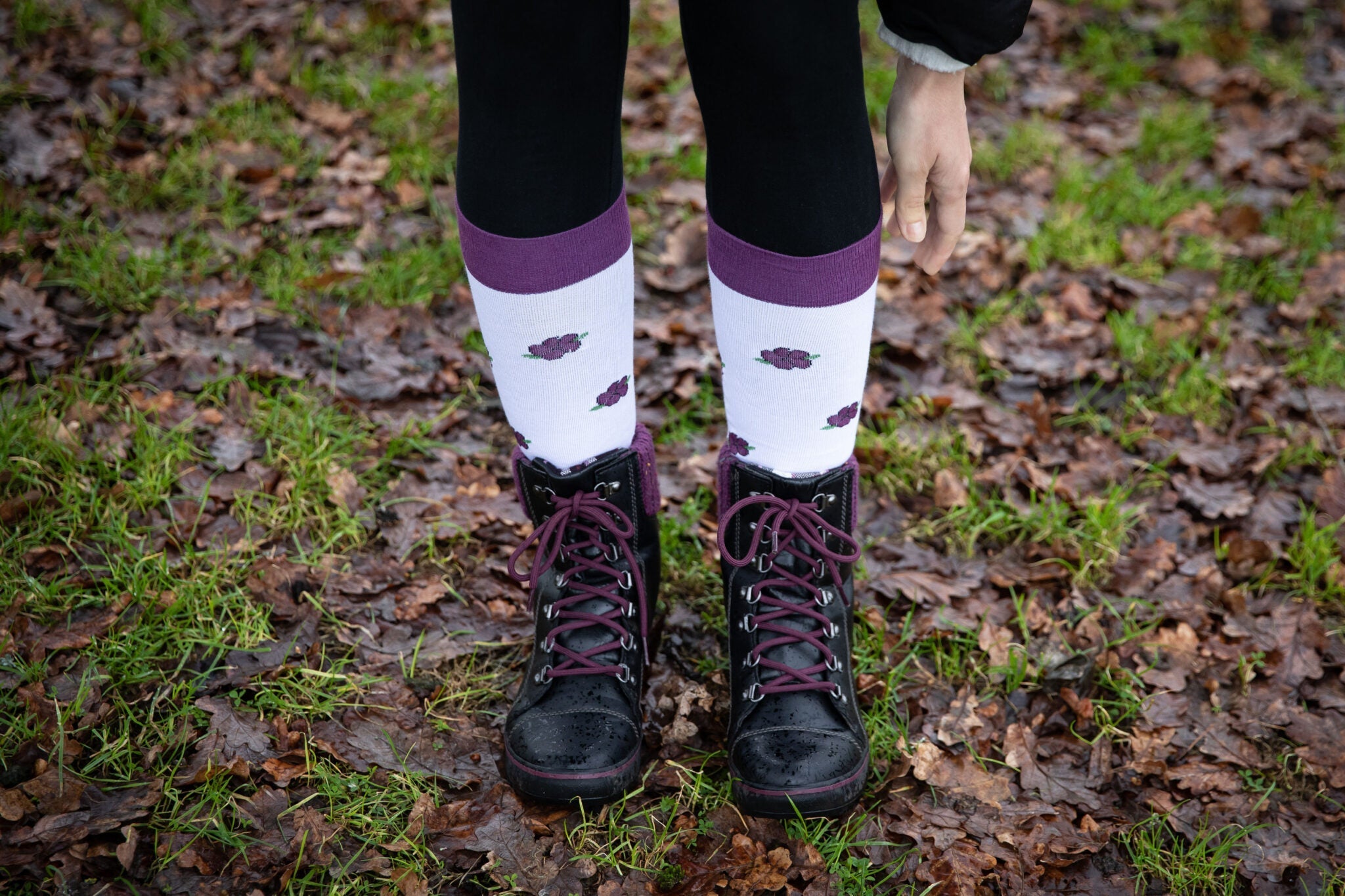We know that compression socks are suitable for people to wear in a wide range of situations and occupations. Whether you’re pregnant, a frequent flyer, a keen runner or a medical professional on your feet all day, the benefits of compression socks and stockings are clear.
But what about as we age? For the same reasons that compression garments can be useful for those recovering from medical procedures or who have reduced mobility, compression socks can bring a wide range of benefits as we naturally age. This blog explores why people over 40 should consider wearing them and explains the best compression levels to consider.
The Benefits of Compression Socks for The Middle-Aged and Older
As we age, our bodies naturally age too and we may experience certain changes including a decrease in muscle mass and blood circulation. The latter of these issues can be addressed through the adoption of compression socks. Wearing compression socks can also bring a range of benefits at any age. These can include:
- Improved Circulation: Blood circulation can naturally decrease as we age which can cause conditions like varicose veins and deep vein thrombosis (DVT). Compression socks and stockings apply graduated pressure up the legs which encourages better blood flow. In turn, this delivers more fresh, oxygenated blood to the areas that need it most.
- Reduced Swelling & Pain: Poor circulation can also lead to other conditions like swelling in the legs. This can become uncomfortable over time, causing muscle fatigues and general aches and pains. In the same way they increase blood flow, compression socks help reduce this fluid buildup in the lower legs, alleviating the pain in the process.
- Prevention of Blood Clots & DVT: Deep Vein Thrombosis can occur when people of all ages spend a lot of time inactive and sitting down. Unfortunately, this is more common in elderly people due to age and other medical or mobility conditions. As a result blood clots can form in the legs. In the same way you would wear them on a long flight, compression socks lower this risk by improving circulation.
- Lower Risk of Varicose Veins: Varicose veins are bulging veins that have become enlarged and twisted over time, and they’re common in elderly adults. While they’re not a serious issue in themselves, they can be uncomfortable and lead to more serious complications. Compression socks can help prevent or slow their progression by reducing pressure buildup in the veins.
- Support for Mobility: By reducing discomfort and improving circulation, compression socks or stockings may make walking easier for the elderly or those with reduced mobility. If mobility and safety are a concern, we recommend FITLEGs AES Grip garments. These have silicone grip pads on the soles to help the wearer move around more confidently and safely, providing traction on a range of floor types.
- Temperature Regulation: Some compression socks, like ours which are made from cotton or bamboo, offer moisture-wicking and temperature-control features. This helps to keep feet dry and comfortable, especially for those who can’t move around so easily.
Who Can and Can’t Wear Compression Socks?
Compression socks designed for everyday wear should be fine for most people to wear as they only offer light-to-moderate compression levels. Medical-grade compression socks provide higher levels of compression and may require a prescription or medical supervision.
However, in all cases, it’s essential to consult with your doctor or care provider first. Because they provide compression, they may not be suitable for people with high blood pressure, or cardiovascular conditions such as peripheral artery disease, arteriosclerosis, heart disease, pulmonary edema and more.
Likewise, those with severe swelling, open wounds or who might be recovering from surgery should not wear compression socks or stockings as this could hamper recovery.
What Compression Levels Do Compression Socks Come In?
Compression socks and stockings are available in a range of compression levels from low to high. Our guide to compression sock ratings explains in much more detail, but in brief:
- Light: 14–17 mmHg - Suitable for everyday wear.
- Medium: 18-24mmHg - Suitable for athletes and specific conditions like pregnancy, varicose veins or DVT.
- High: 25–35 mmHg - Suitable for specific medical conditions. Require medical supervision.
If you’re looking for compression socks, either for yourself or a relative, explore the FITLEGs shop. We have a wide range of designs, styles and compression levels to suit any wearer, but if you need more assistance, don’t hesitate to contact us.

